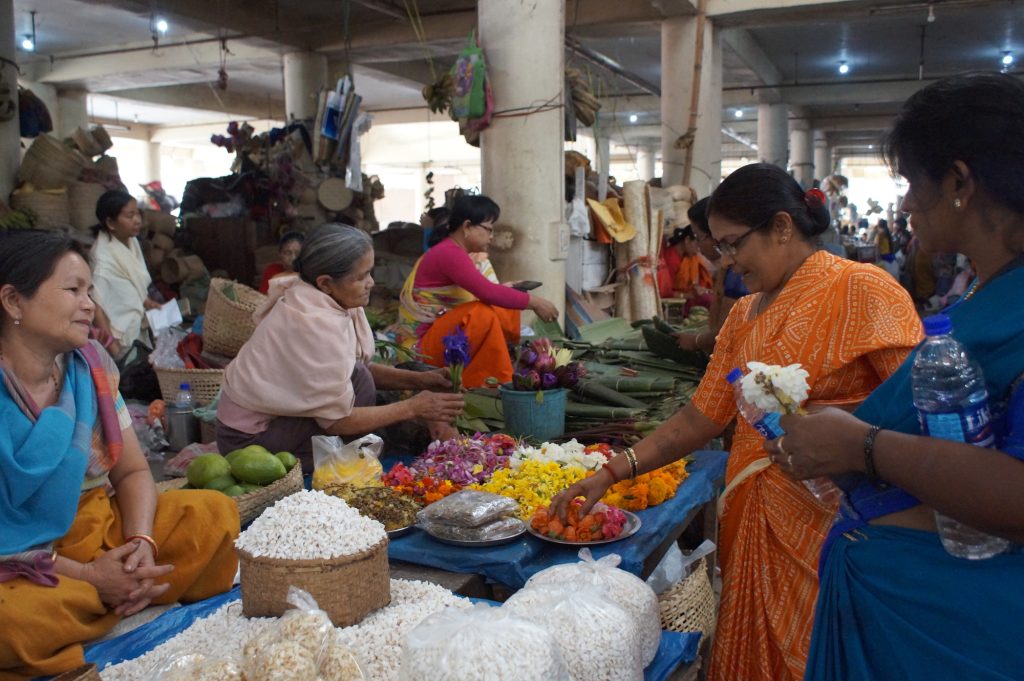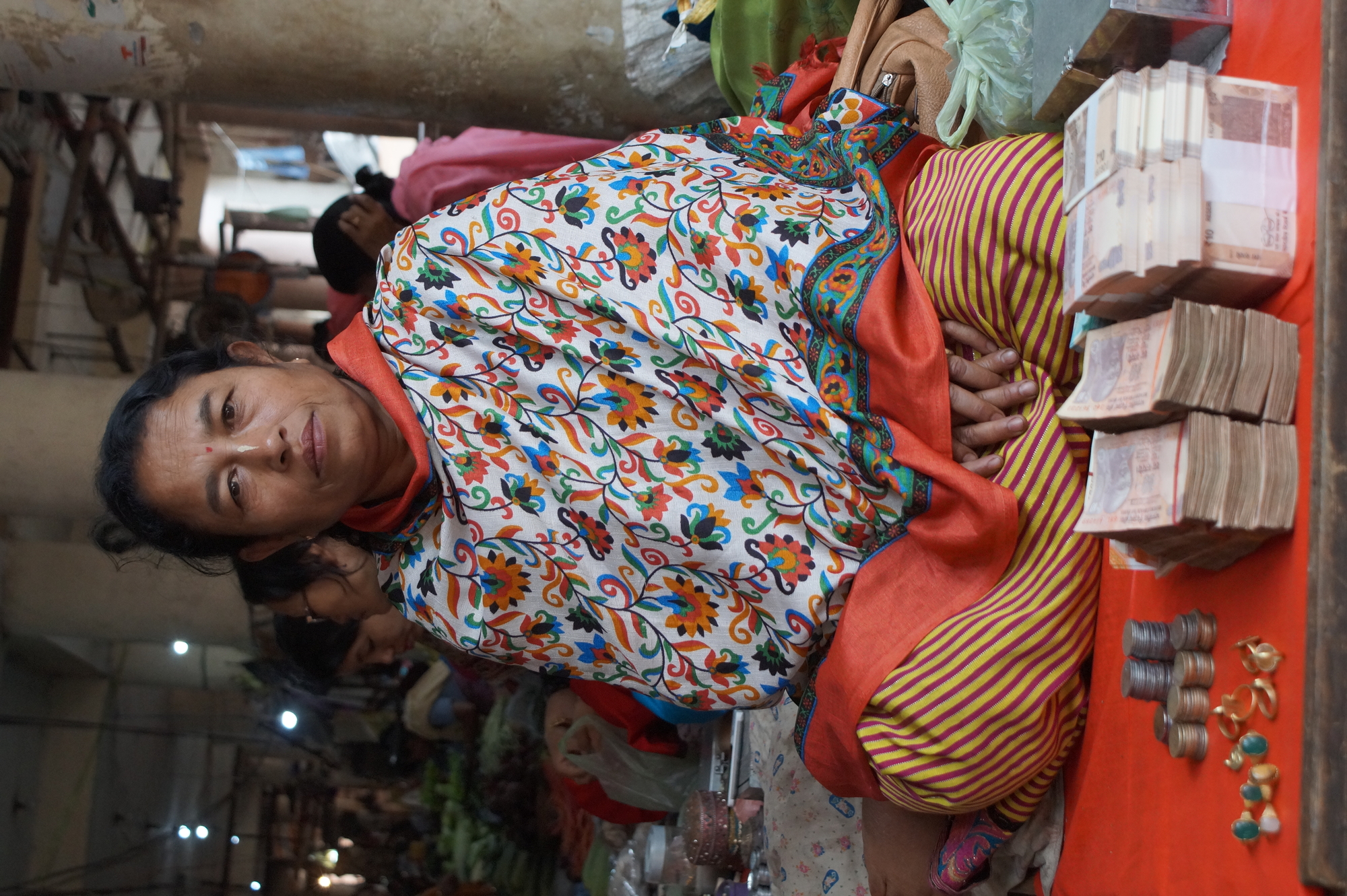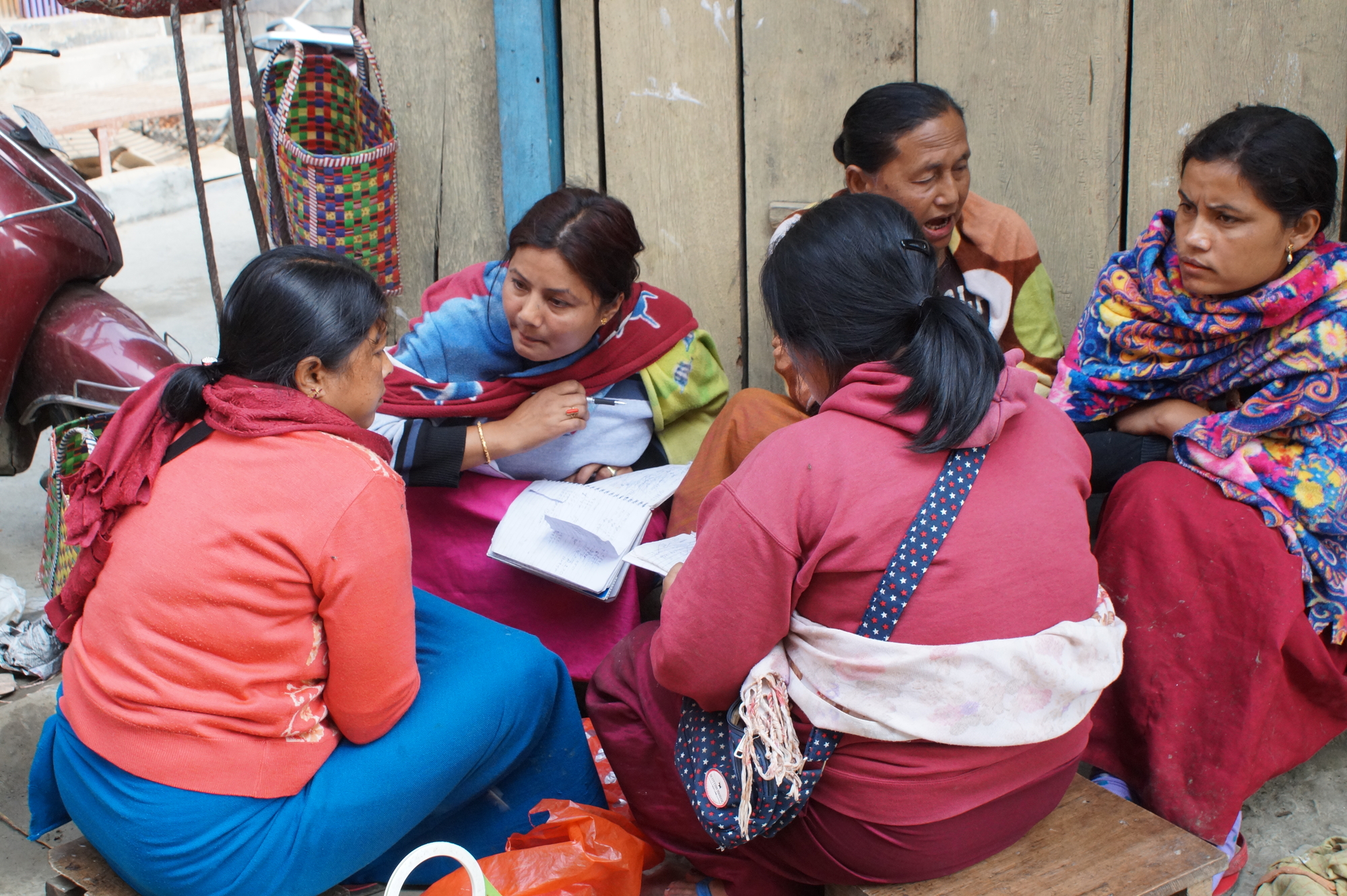
Imagining street-markets as urban commons: The mother’s market in Manipur
– Swetha Rao Dhananka and Leo F. Saldanha
Eerily empty streets were India’s first lockdown’s most visible and audible change. Indian streets are busy, bustling and energised by the 40 million street vendors1. They were missed, everywhere. The Covid 19 pandemic has affected the entire food system and laid bare its fragility2. Food distribution networks that are local, independent from imports and not involving distant logistical-chains have become crucial to ensure the supply of food. As the first lockdown in India gradually relaxed, life returned to normal with vendors supplying food and other essential services to urban inhabitants. The pandemic clearly is an unprecedented, though frightening, context in which the re-imagination of streets becomes necessary.
Street-markets are governed by a gamut of regulations and restrictions. They operate and are positioned in a contested space, where urban dwellers engage in a constant struggle to find spaces to trade and survive and municipal governments impose regulations and often undemocratically evolved controls over the street. They constantly confront a “worlded”3 sense of aesthetic4 and function, stand against financialization5 processes of urban space and in this way constantly breach the dichotomy of public and private. This is a critical aspect: street-vendors do not have private resources and capital to pay formal rent or to build their ‘own’ ‘property’ to trade from. Hence, they occupy “public” space, on the public street, in order to sustain their lives and livelihoods and extend crucial urban services to multiple publics. This occurs as larger and dominant political and economic forces in the city are making way to a globalised model of retail, facilitated by the formal State and its statutory provisions.
In such a context, to imagine the future of street-markets, we argue that they need to be conceived, treated and governed as urban commons, leaning on Gibson-Graham et al.’s work6. Two groups of scholars have explored the broader concept of the commons. Those who study common pool resources and how they are managed collectively and the others whose interest articulates mainly around capitalism and commons as a larger collective political experience7. This contribution leans on the latter conception of the commons, as urban commons are not a subtractable resource (relating to common-pool resources). In the urban context indeed, consuming does not take away value, but rather increases it. “The commons are made up of resources, institutions for regulating those resources and the community that devises the institutions, both shepherding and benefiting from the resources”8. This definition points out that commons can clearly be considered as resources and practice. Kip et al. argue that there is a distinction to be made between ‘the city’ and ‘the urban’. While ‘the city’ is a specific place, ‘the urban’ characterizes connectivity in the sense of a set of processes that link places and spaces across the global9.
In this sense ‘the city’ characterizes street-markets with local practices, culture and traditions, but ‘the urban’ equally informs markets as they form a hub of connectivity of goods, logistics and transactions at local, regional and global levels of the political economy that embraces them. Ideal-typically, street-markets could be referred to as urban commons as they represent an institutional arrangement between a resource (urban space, knowledge, resources within the community and material: fruits, vegetables and other non-food products sold in the street-market), its use (by vendors and consumers) being regulated, and the community (vendors, residents, consumers, city municipalities) devising its institutions.
Gibson-Graham et al.10 underline that communities are constituted through the process of commoning (and vice-versa) and hence suggest to rather use commoning as a verb. A “commoning-community”11 engages in relational processes involving 1) negotiating access, 2) creating protocols for its use, 3) distributing benefit, 4) taking care and 5) accepting responsibility12. Feminist political ecology scholars further recognize that commoning could be fundamental to transforming gender and other social inequalities as it occurs through the four forms of commons: biophysical, knowledge, cultural and social13.
We analyse the “Ima’s” (Mothers’) of Manipur’s (city in North-East India) Ima Keithel market as the “commoning-community” that engages in the five relational processes through the four forms of commons that have rendered the market legendry and resilient since over 500 years! It incorporates the commons approach to urban markets and could well be the silver lining on the canvas of the imaginaries about urban spaces. This case stands against the current tendency in India of street-markets being increasingly marginalized in formal urban planning and retail policy, having to struggle, to claim and reclaim their due space in the urban.
The arguments presented here are based on original primary data collected in 2018 through focus group discussions with numerable stakeholders (market associations – its office bearers, vendors, municipal officers and politicians), semi-structured interviews with women vendors and existing documentation on the market. An urban commons approach works, first and foremost, towards reclaiming the street and urban places as a public space that connects to a larger political economy. Such an approach allows rethinking urban space as recreational, educational, political and cultural spaces as well. Thus, the urban commons framework promotes more than the expected markets’ major role, which is in accommodating and advancing an economically thriving urban space. It also extends, secures livelihood opportunities to marginalized and vulnerable sections of society and recognizes their particular knowledge and skill.
The “commoning community” at Ima Keithel
The Ima Keithel is a legendary space in Imphal, the capital of Manipur. It is not only a one-stop market, but serves a complex regional role: it functions as a political, educational and entrepreneurial space. Ima Keithel incorporates institutional arrangements along with self-identified goals, and is run by generations of only women. The market anchors the local economy. Over the years, the women’s collective political power and economical importance has developed through the market space and has been a prevailing force in becoming the socio-economic engine of the region. As a market space, it provides the entire region livelihoods, promoting multiple local economies by extending to them a hub of clients to sell their agrarian and artisanal products and also raw materials.
Culturally, the women who govern this market mainly stem from the Meitei tribe and have sustained the market for generations with every trade being passed on from mother to daughter-in-law. This cultural principle of inheritance is an informal law at the market. However, a recent surge in the number of vendors from across Manipuri society and elsewhere has introduced new dynamics and competition. Therefore, the Keithel continues to evolve even as it expands the market operations. This strength and nurturance comes through their particular social histories of developing a strong voice and a resilient space against whom they considered “outsiders” (such as the British colonisers and now the military presence). There is then the distinctive statement that the market is run in the absence of men; an outcome of women having to tend to the home and to trade as men were usually at war – hence, transforming gender relations. Over time, women turned the market into an intentional socializing space for women vendors, young and old. The market thus has worked as a place of history, as a space of struggle, as a landscape of memories and as a critical place for information exchange and money. In Ima Keithel, the public and the private live and intersect seamlessly.
Use and care
Ima Keithel is housed in three buildings constructed in 2005 on the very biophysical space where the market evolved over centuries on the flood plains of Imphal River. Each of these buildings have separate associations that manage the affairs of the multiple trading spaces. Within which there are sub-associations that exist according to the type of trade. Each of these associations have their own executive committees and decisions and are deeply democratic.
The three buildings may not have been developed as per the aesthetic traditions of Manipur, and aren’t qualitatively well built. However, they are well managed and so are the surrounding streets where vending spaces extend outdoors. Women inside Ima Keithel sit on a 4X6 platform and use it to sell their goods. Often the space is subdivided between the mother-in-law and the daughters-in-law. Formally, upon the death of the license-holder, the license should be surrendered to the municipality. But women, as they consider this as their own market, hand it down to the next generation themselves. Licenses are hardly ever surrendered. Instead, women trade them informally and they cost a considerable amount, depending on the commodity traded in the space allotted.
The market sells mixed commodities that are grown and hand-produced in Manipur. The Imphal municipality levies a nominal vendor fee every month. This is used for care and maintenance of the markets, for provisioning water, electricity, sanitation, and also in extending a variety of services to support mothers, such as childcare. The municipality manages solid waste by tapping into this tax revenue stream.
Negotiation, responsibility and benefits
The awareness and assertion of individual and collective rights has turned the Ima Keithel into an active political hub. Collective negotiation and collective assertions work with available legal instruments to secure rights and claim relevant opportunities. So politically astute are the women who manage and literally live in this space that they engage effectively in the use of the Right to Information Act to secure information and hold the local government to account.
The women who manage this complex market, which has over 3000 vendors, are all very well aware of their rights and responsibilities. Their organizing capacities are strong and resilient and they are thus able to influence government’s decision-making on issues concerning the market and also larger political, economic and regional concerns. The Imphal municipality interacts with these three associations, and it is only through the association’s mechanisms that implications of the decisions trickle through the sub-associations all the way to individual vendors. This form of negotiating with the state has had very successful outcomes to individual traders and the collectives of traders at once.
The associations are registered under the Cooperative and Trade Union Act. In that sense, they are accountable to the State, as they are required to maintain books of accounts and conduct audits. The associations also have office bearers who during their time of duty do not engage in vending activity. They instead invest their time entirely for the welfare of the collective. They play a critical role in promoting financial inclusion and advancing entrepreneurial capacities. There is also an internal credit system run by the union from which women traders borrow money at lower interest rates to make their businesses viable. This system allows these traders in ensuring prices of their products are competitive, thus providing an advantage individually, and collectively. This explains the draw from across the region to sell in and shop at Ima Keithel. Women take authority in fixing commodity prices. This is not only an expression of their economic strength, but it is also a strategy in making this market sustainable as a regional economic power engine.
The benefit of such market operations is that it has become the economic engine of the region of Manipur State and beyond, it emerges as a major enabling network in sustaining thousands of livelihoods of primary producers, processors, artisans and traders that operate in resonance with the commons approach situated in the ‘urban’. The series of transactions that result from the ‘urban’ quality of the market’s operation connect different economies and spaces to one another in the modus operandi of informality14 that creates accommodating structures. Such structures often help to reconcile the interests of diverse actors with the existing formal institutional arrangements and enhance the stability of formal institutions by dampening demands for change15.
Impressions of Ima-Keithel
Conclusion
In adopting an urban commons approach to urban street markets we can mark a significant departure from urban management practices that view land and other urban amenities as assets. The latter become highly regulated “from above” and are governed by statutory provisions that do not allow dynamic uses of spaces. Such spaces become speculative objects rather than a common good at the service of the communities using and giving meaning to the space. Due to speculation, cities around the world are waking up to gentrification processes that render urban spaces unaffordable and inaccessible to weaker sections of society and over time deprive neighbourhoods of diversity and charm.
Across the world, street vendors, including the mothers at Ima Keithel in Manipur, are struggling through dire times to survive as traders. Governments, who now are held accountable on their performances in responding to the pandemic, have turned to presenting ‘sanitised’ visions of streets as a method to secure public health, in which street vendors have to reclaim their place. In doing so, the deeper values of streets are thus being marginalized, to the point that some cities’ street vending spaces no longer exist.
In such a context, it is vital that the larger public consciously shapes ideas and patterns of consumption. Relying on online trade, which has increased tremendously as an outcome of the pandemic, is detrimental to the local food-distribution system and the livelihoods it involves. It is the empathetic reiteration of organic connections that can not only support the survival of street-market systems, but also ensure accessibility to the market to remain local, low carbon, and supportive of local livelihoods. Street markets are as old as humankind and yet are quite capable of accommodating the highly contested claims associated with “modern” markets, such as efficiency, economic viability and sustainability. There is now more than ever, a critical need to rethink entire processes, from connecting the producer to consumer through to humanistic networks about rights, responsibilities and sustainability. Street markets perform amazingly diverse functions for the majority of the population and at a highly affordable cost. They can be managed with hardly any investment in high-end technology (no cold-chain), and yet work with great efficiency, providing multiple livelihoods, without requiring high educational credentials, operating at the most optimal costs. All of this is achieved, while ensuring that the product finally delivered is fresh, affordable and local. Thus, arguably, an efficient and climate resilient model of supplying food and other supplies to massive populations is already accessible and available down the street. Street-markets such as Ima Keithel inspire to envision vendors and consumers as protagonists in imaginaries of urban futures.
Notes
1. National Hawkers Federation (2020). http://nationalhawkerfederation.com/
2. WHO (2020) https://www.who.int/news/item/13-10-2020-impact-of-covid-19-on-people’s-livelihoods-their-health-and-our-food-systems
3. Roy, A., & Ong, A. (2011). Worlding Cities: Asian Experiments and the Art of Being Global. West Sussex: Wiley-Blackwell.
4. Ghertner, D. A. (2011). Rule by aesthetics: world-class city making in Delhi. In A. Roy & A. Ong (Eds.), Worlding Cities: Asian Experiments and the Art of Being Global. West Sussex: Wiley-Blackwell.
5. Goldman, M. (2011). “Speculating on the Next World City”, in Roy, A. and Ong, A. (eds) Worlding Cities. West Sussex: Wiley-Blackwell, pp. 229–258. doi: 10.1002/9781444346800.ch9.
6. Gibson-Graham, J. K., Cameron, J., & Healy, S. (2018). Commoning as a postcapitalist politics 1. Releasing the Commons, 192–212. https://doi.org/10.4324/9781315673172-12
7. Huron, A. (2017). Theorising the urban commons: New thoughts, tensions and paths forward. Urban Studies, 54(4), 1062–1069. https://doi.org/10.1177/0042098016685528
8. Dellenbaugh et al., 2015 in Gibson-Graham, J. K., Cameron, J., & Healy, S. (2018). Commoning as a postcapitalist politics 1. Releasing the Commons, 192–212. https://doi.org/10.4324/9781315673172-12
9. Huron, A. (2017). “Theorising the urban commons: New thoughts, tensions and paths forward”, Urban Studies, 54(4), pp. 1062–1069. doi: 10.1177/0042098016685528.
10. Gibson-Graham, J. K., Cameron, J. and Healy, S. (2018). “Commoning as a postcapitalist politics”, Releasing the Commons, pp. 192–212. doi: 10.4324/9781315673172-12.
11. Sato, C., & Soto Alarcón, J. M. (2019). “Toward a postcapitalist feminist political ecology’ approach to the commons and communing”. International Journal of the Commons, 13(1), 36. https://doi.org/10.18352/ijc.933
12. Gibson-Graham, J. K., Cameron, J., & Healy, S. (2018). Commoning as a postcapitalist politics 1. Releasing the Commons, 192–212. https://doi.org/10.4324/9781315673172-12
13. Sato, C. and Soto Alarcón, J. M. (2019) “Toward a postcapitalist feminist political ecology’ approach to the commons and communing”, International Journal of the Commons, 13(1), p. 36. doi: 10.18352/ijc.933.
14. Roy, A. (2005). “Urban informality: toward an epistemology of planning”, Journal of the American Planning Association. Routledge, 71(2), pp. 147–158.
15. Helmke, G., & Levitsky, S. (2004). Informal institutions and comparative politics: a research agenda. Perspectives on Politics, 2(04), 725–740.
Swetha Rao Dhananka is a sociologist and Professor at the HES-SO University of Applied Sciences and Arts, Western Switzerland, School of Social Work, Fribourg, Switzerland. She obtained her PhD from the University of Lausanne, Switzerland and was a post-doc fellow at the Development Planning Unit at UCL (London) and the Indian Institute of Human Settlements (Bangalore). Her interests articulate around community approaches in social work, governance of commons, urbanisation processes – particularly with regard to its social effects, various institutional responses and political claim-making.
Leo F. Saldanha is full-time Coordinator and Trustee of the Environment Support Group. He has gained wide-ranging experience in the areas of Environmental Law and Policy, Decentralisation, Urban Planning and a variety of Human Rights and Development related issues, working across many sectors for over a decade. He is a keen campaigner on critical environmental and social justice issues and has guided several campaigns demanding evolution of progressive laws and effective action.
Volume 4, no. 2 Summer 2021






